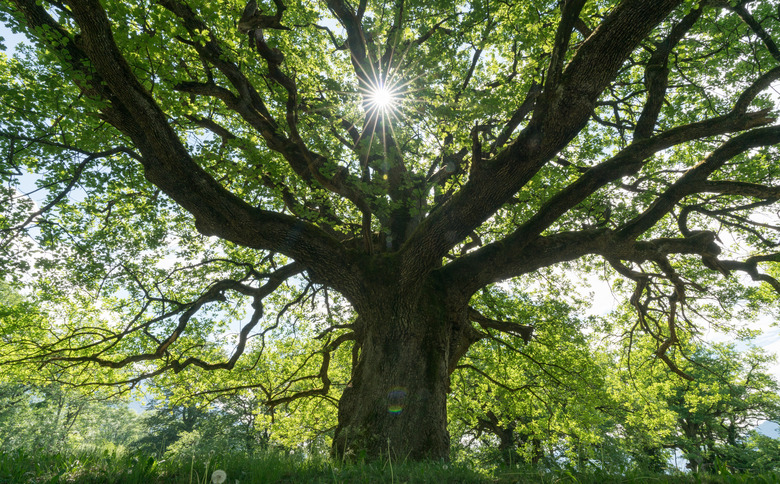How To Get Rid Of Baby Oak Tree Saplings
We may receive a commission on purchases made from links.
An established oak tree (Quercus spp.) will drop acorns over its lifetime. These acorns can be buried or moved by foraging wildlife and may begin to sprout. While this is one way the species has managed to flourish over time, in your own garden, it may not be the ideal situation.
Oak tree seedlings can spring up in areas where you don't want them, like by the trunk of your established tree or in your lawn. While these small seedlings represent the "infancy" stage of a tree, they become saplings when they reach the "adolescent" stage.
There are several methods to get rid of oak tree saplings around your yard, depending on their size, location and abundance. Understanding the problem you're dealing with will help you choose the best techniques for safe, successful removal.
Why Get Rid of Saplings?
Why Get Rid of Saplings?
Some sapling removal may just be for aesthetic reasons. Gardens need to be planned so that they look appealing and are pleasant places in which to spend time. Foraging animals don't tend to stick to any gardening design plans, though, and could end up planting an oak tree sapling in the middle of a walkway or in an area that blocks sunlight from your other plants.
Another issue with oak tree saplings is if they are growing too close to the base of an established oak tree. They can cause issues for the older oak tree plus mar its majestic natural beauty. Removing saplings can be key to keeping both your oak tree and your garden, in general, looking their best.
Cutting Oak Tree Saplings
Cutting Oak Tree Saplings
If you catch oak seedlings while they're very young, you can usually remove them manually. If they are particularly small, you may be able to simply grasp them close to the base and pull them up by the roots. Removing smaller sprouts before they've managed to take root is the most efficient way to prevent them from progressing to larger saplings, but it can be easy to miss this window and find that the saplings have grown larger and taken firmer root.
You should cut the saplings as close to the ground as possible and then dig out any deeper roots. Damaging or removing the roots is the only way to ensure the saplings are properly removed. You may need to come back periodically to where a removed sapling was growing to remove any potential new sprouts and to ensure the sapling is permanently removed.
Treating With Herbicide
Treating With Herbicide
If your oak tree saplings are a little more established or trickier to remove, you may decide to treat them with a chemical herbicide. If so, carefully read and follow all directions on the product label, including those pertaining to safety precautions/gear and timing, mixing, application and reapplication, cleanup, and safe storage and disposal. Cut back the sapling and make a couple of cuts in the top of the trunk using secateurs or other cutting tool. Always wear cut-resistant gardening gloves to protect your hands when using secateurs.
If you use a concentrated herbicide, mix it with water as directed on the product label and spray the sapling, concentrating on the cuts you've made in the trunk. This will help ensure that the product is transported down into the roots.
The sapling should begin to turn brown and die. If the initial application doesn't work, you may need to repeat the process. After the sapling is dead, you can dig it out to remove any final traces.
Treating Oak Suckers
Treating Oak Suckers
Suckers are different from seedlings and saplings in that they grow out of the root systems of a tree. They grow after roots become damaged, either by accident or during a deliberate cutback. They should be physically removed by tearing them out, as this will help minimize their potential to grow back.
If suckers are particularly difficult to remove, you can also treat them with chemical herbicide. This is a trickier task than treating seedlings or saplings, however, as the parent tree itself can absorb the chemical through its roots. You can consider this option if you plan to remove the tree anyway in the near future. After cutting the tree down, remove any suckers growing from the stump and apply a tree stump herbicide to prevent new suckers from forming.
